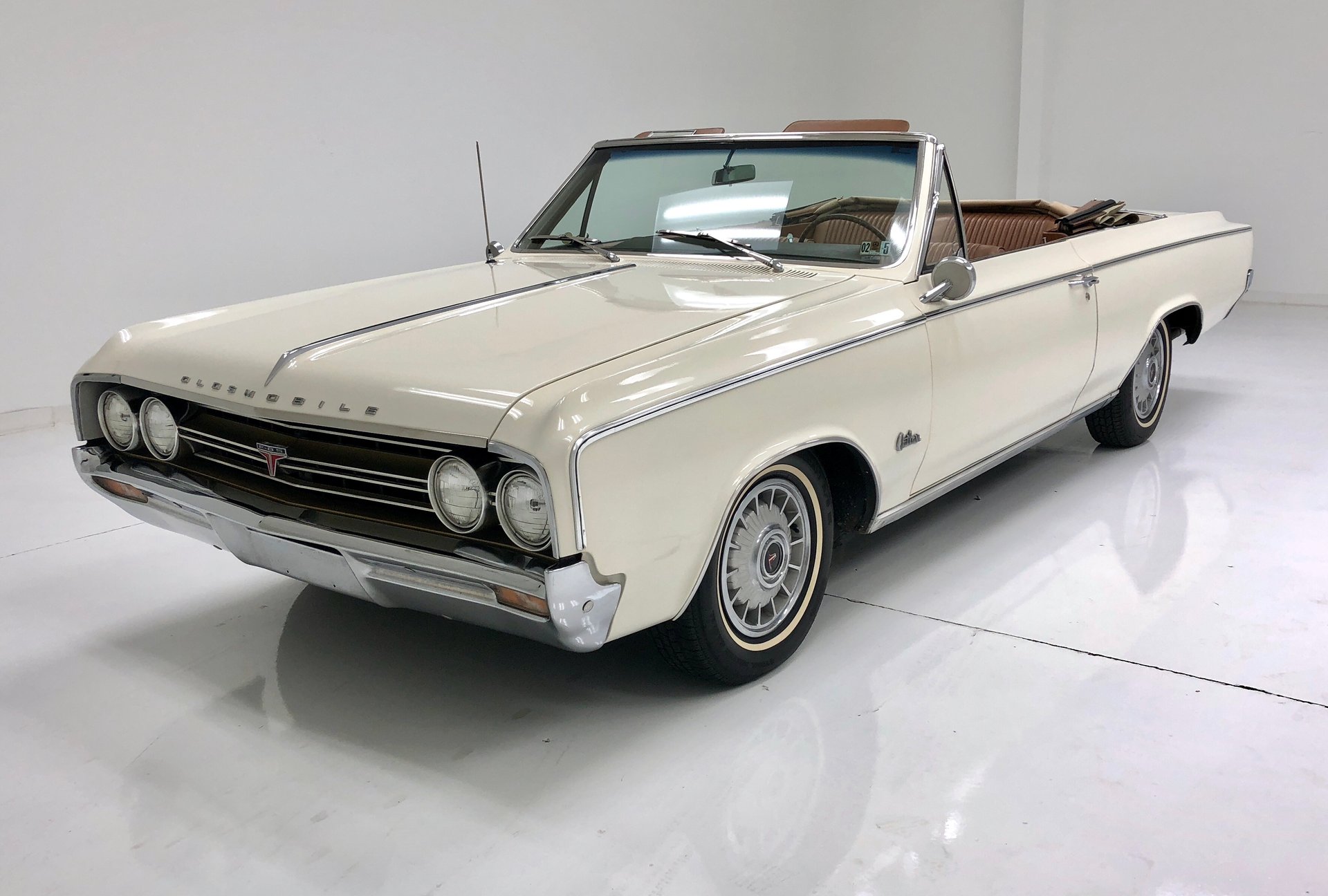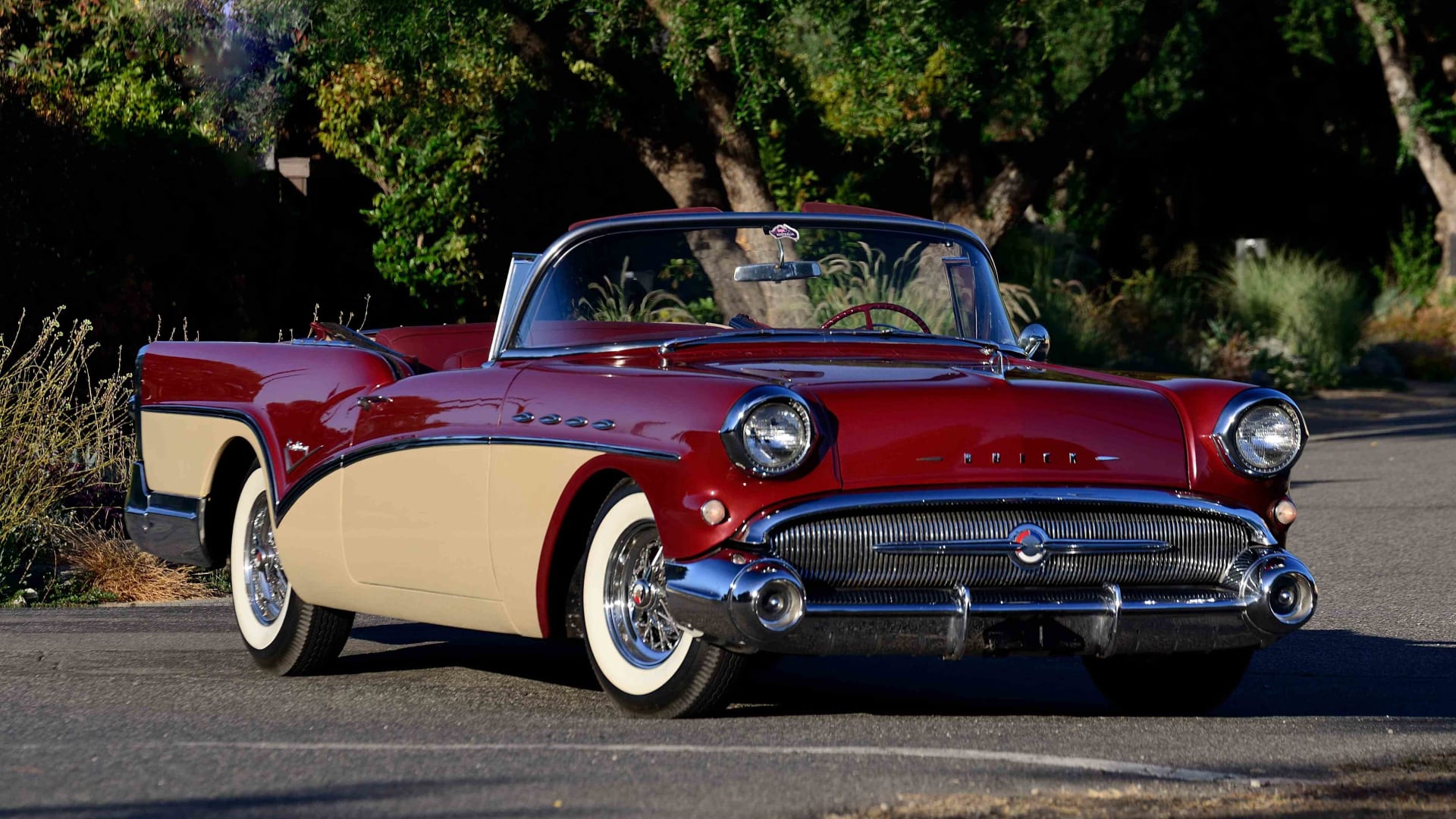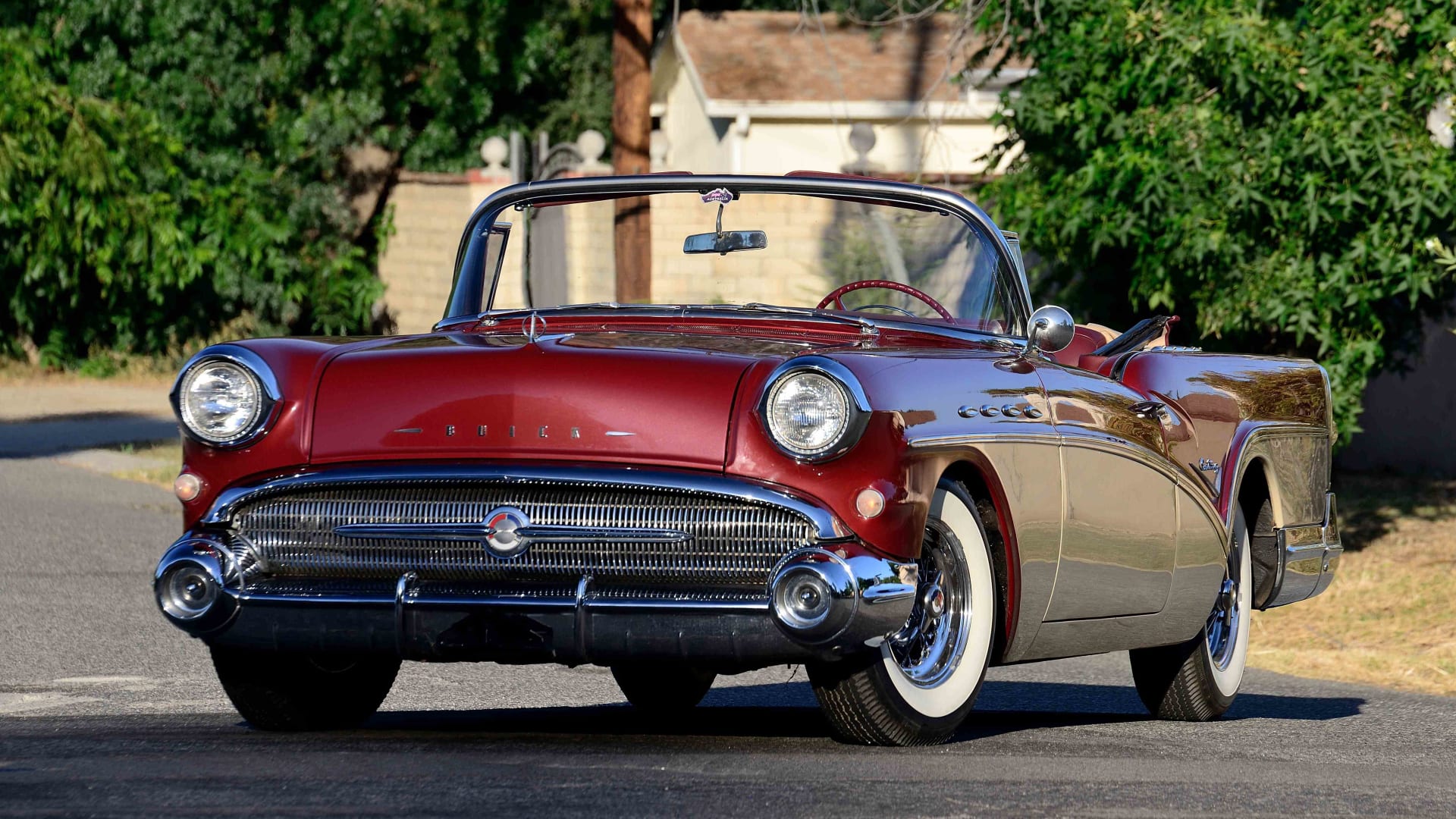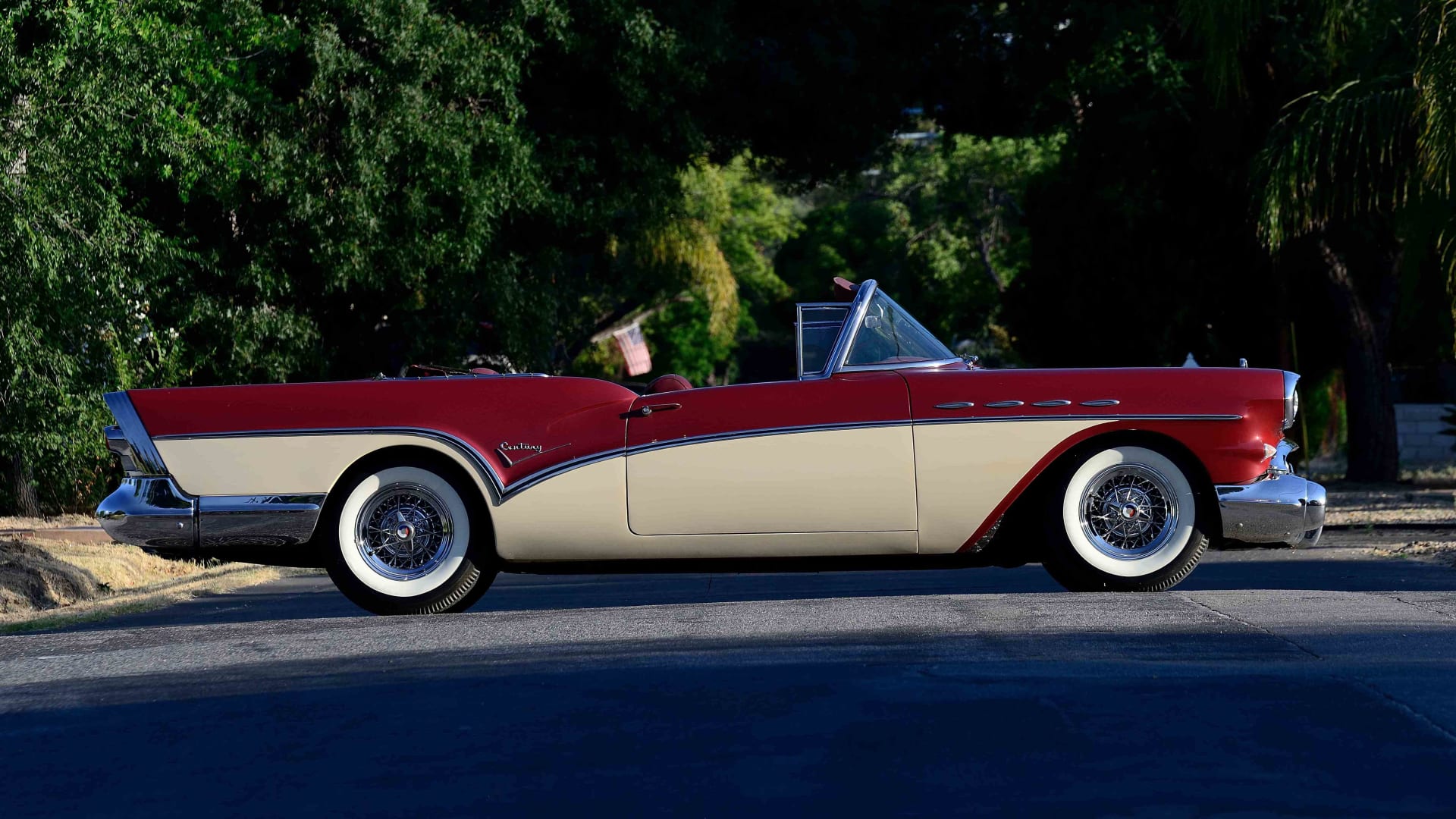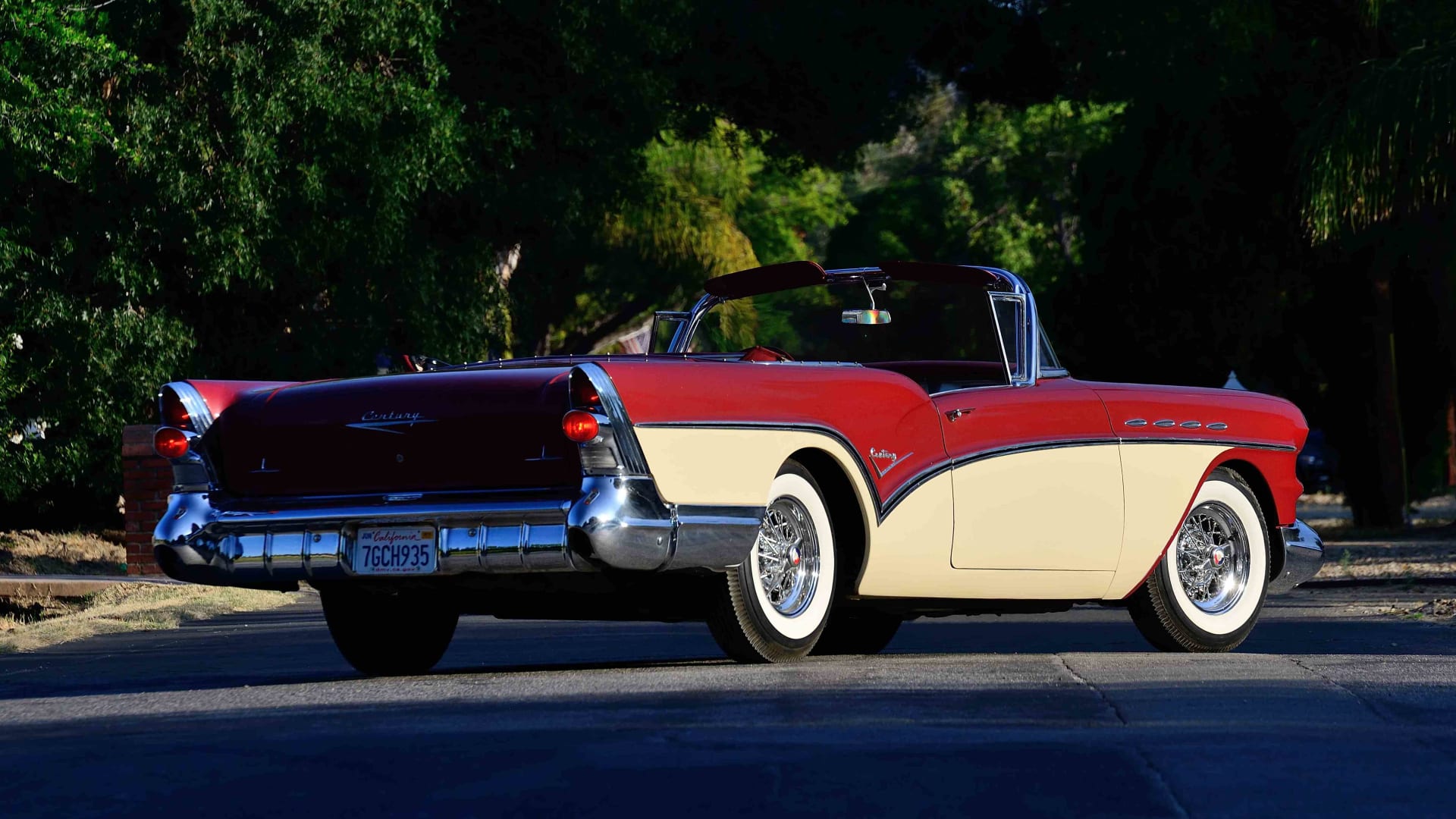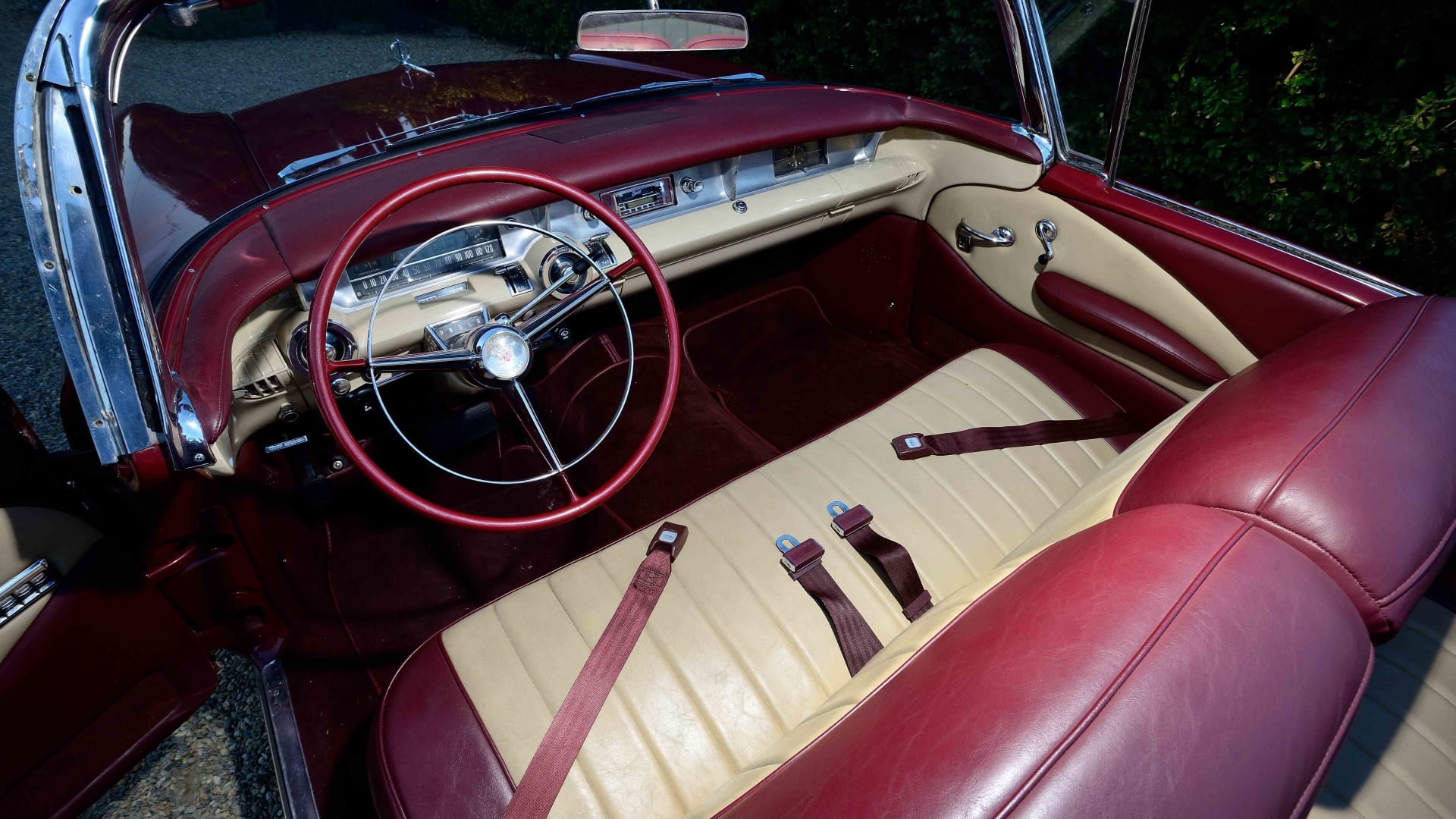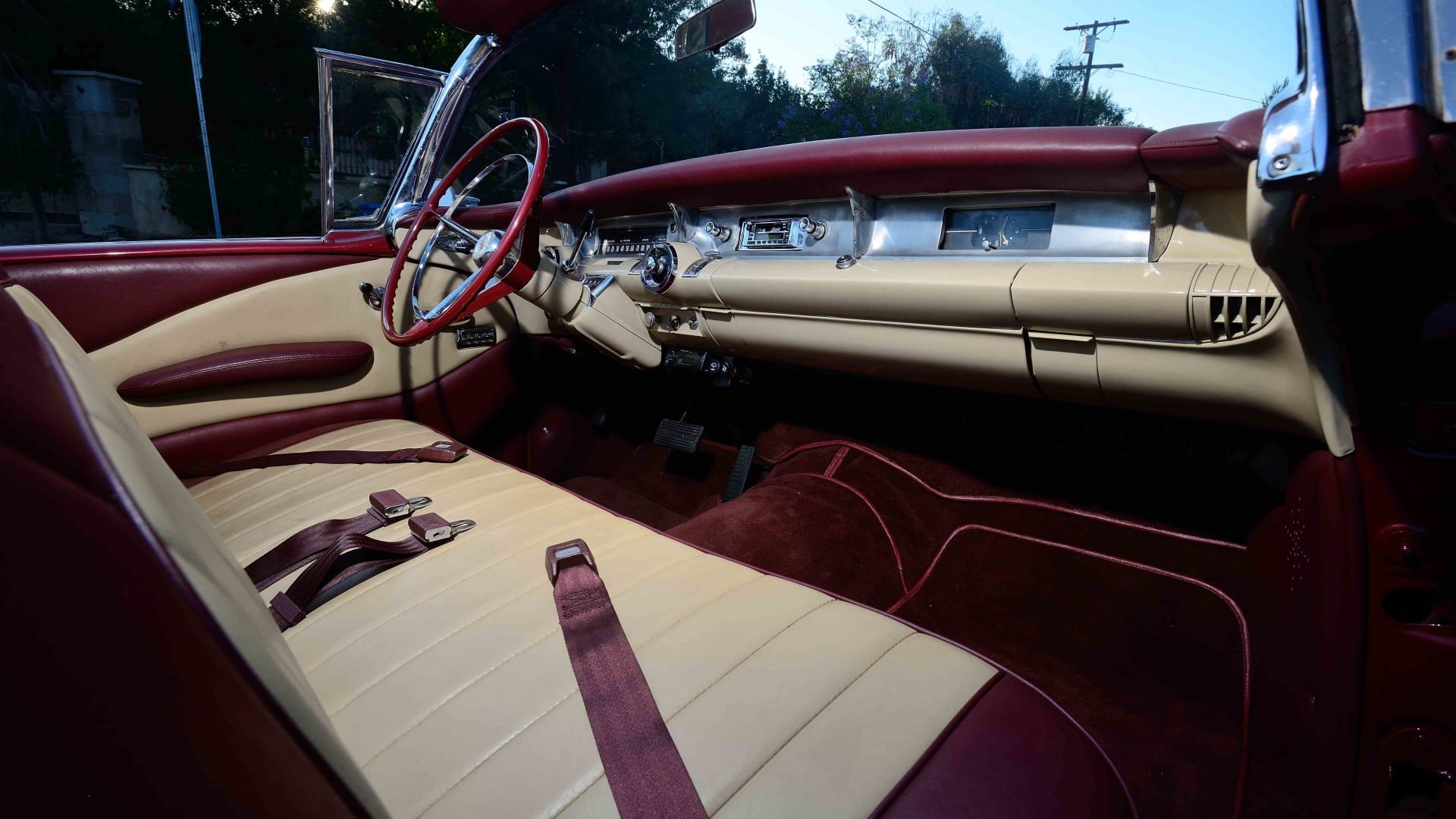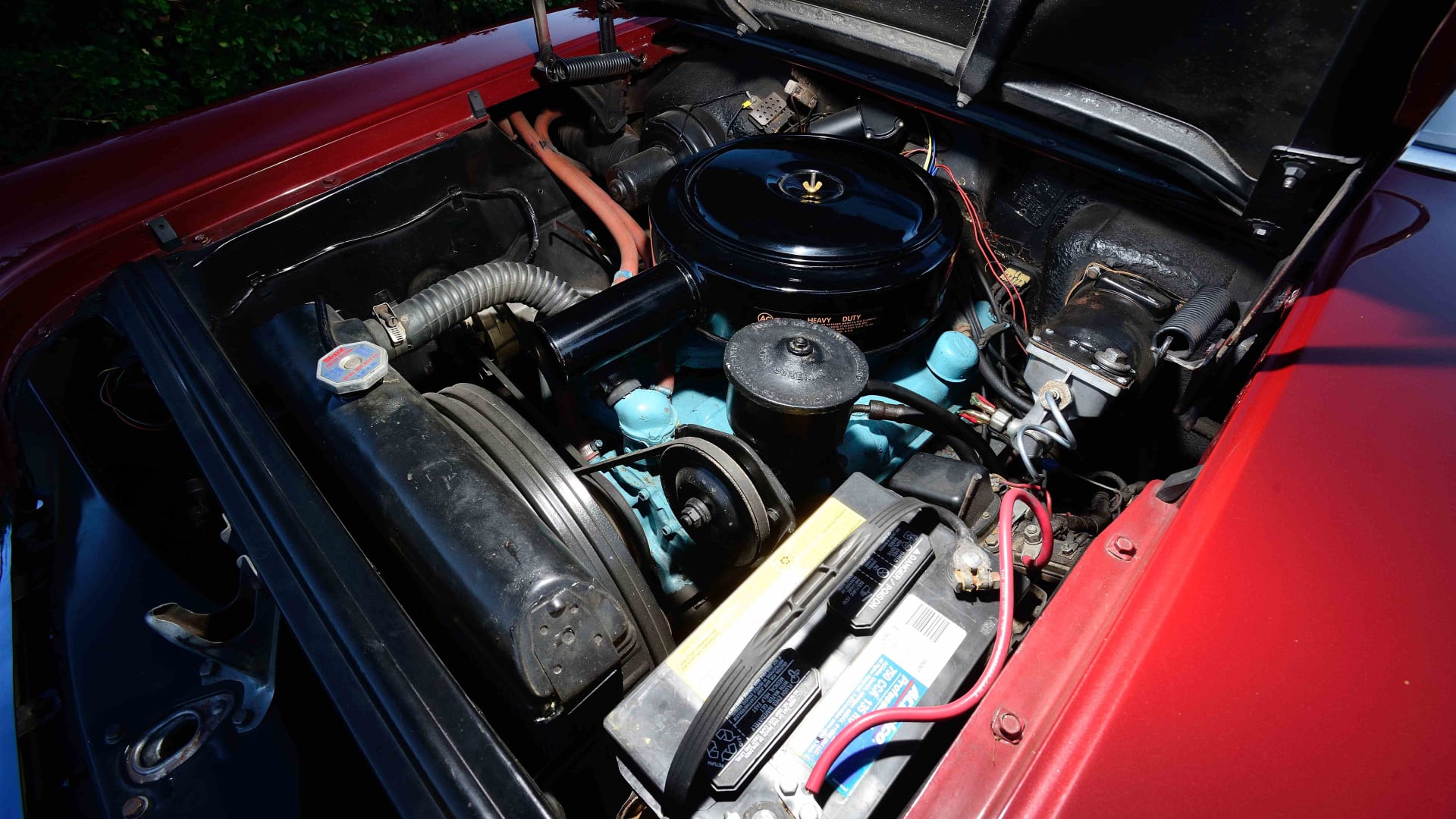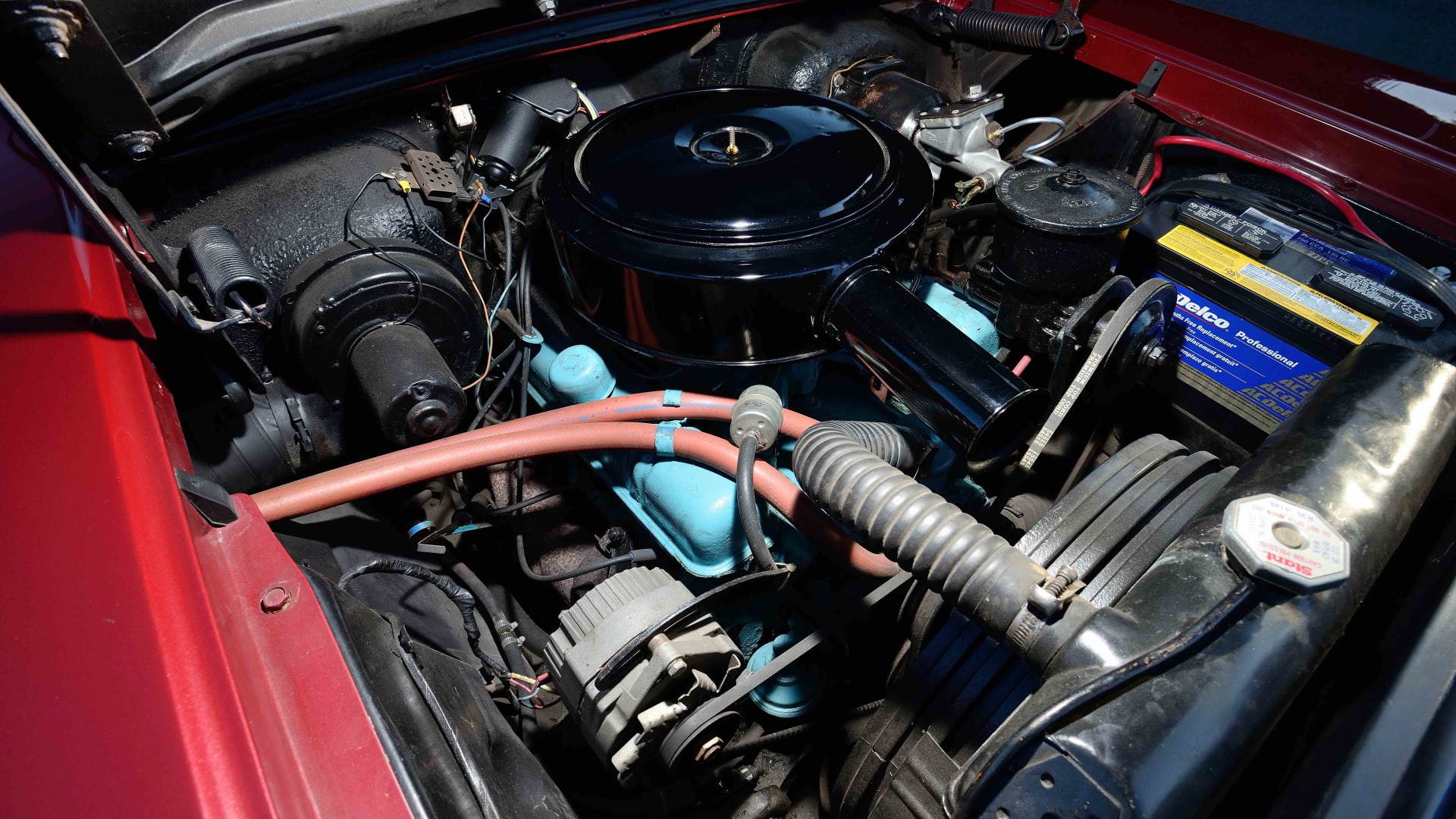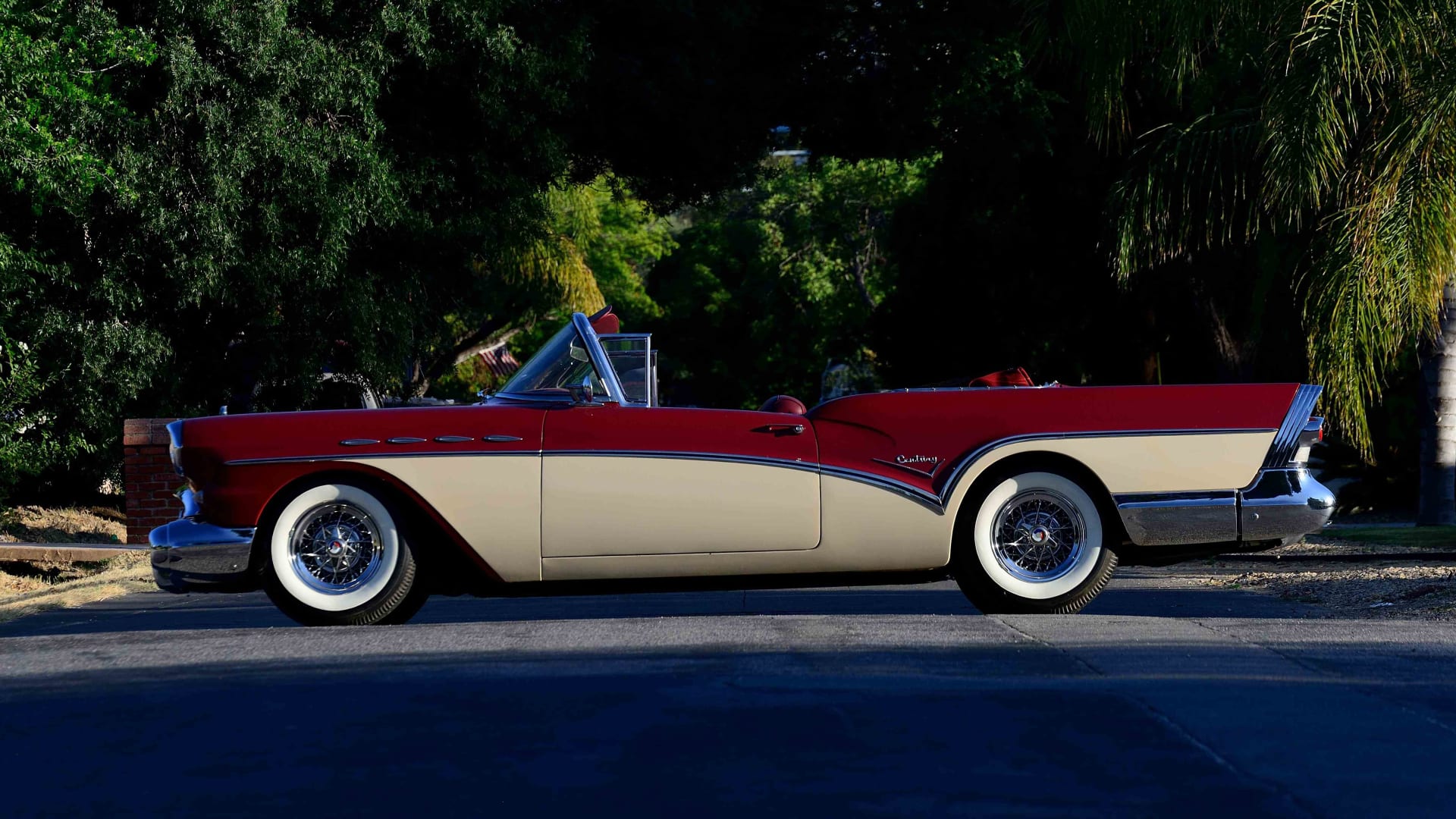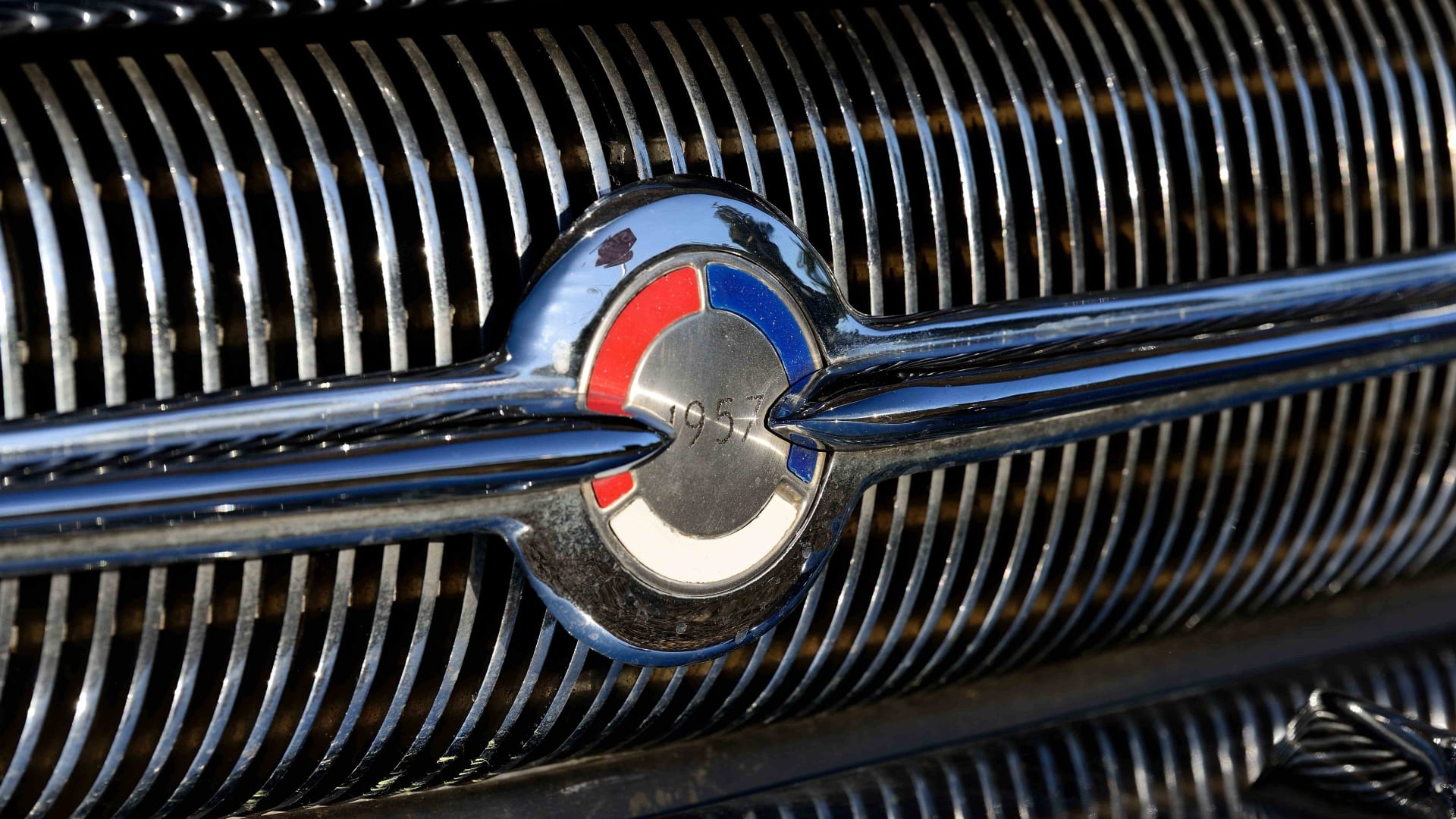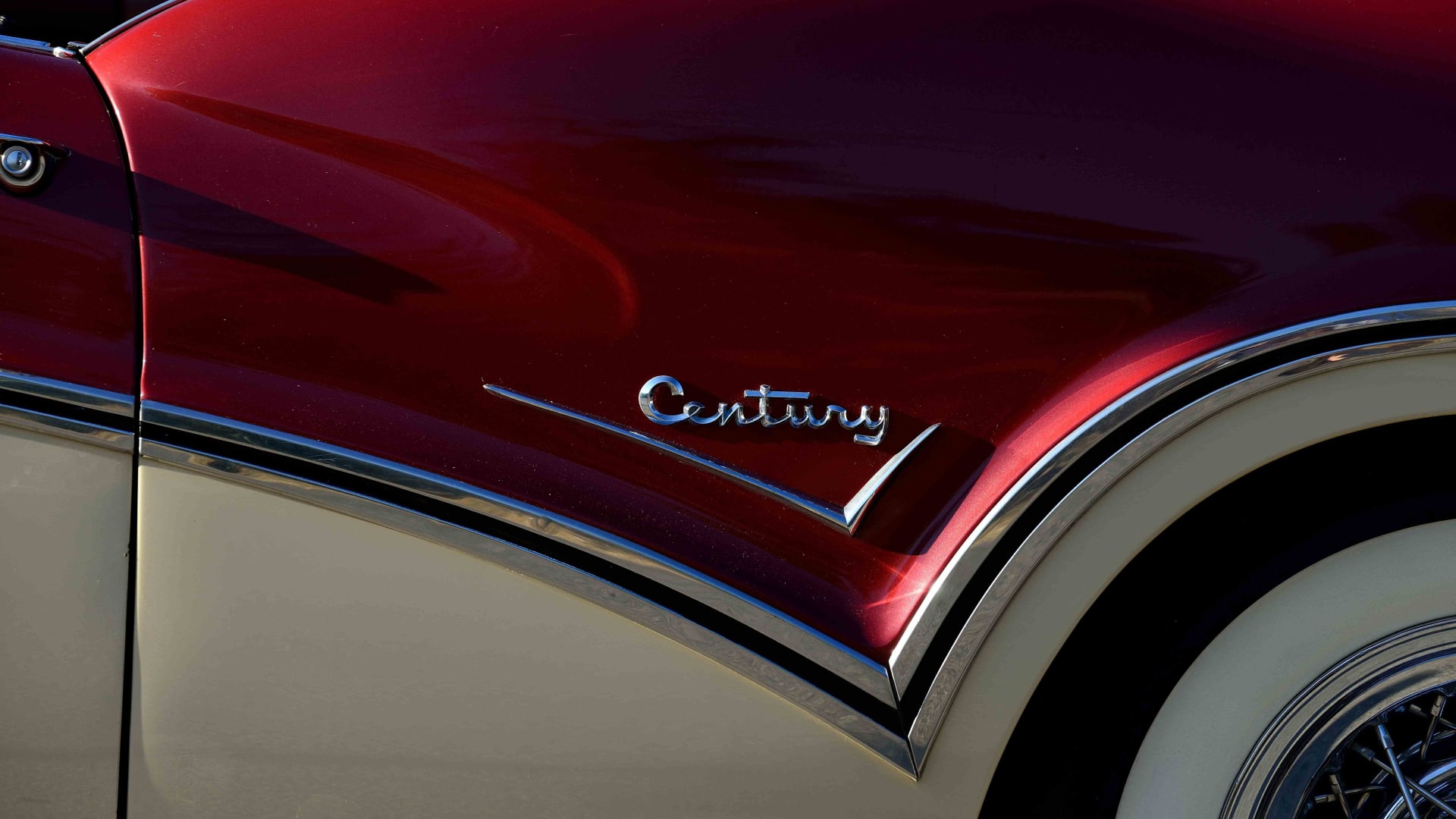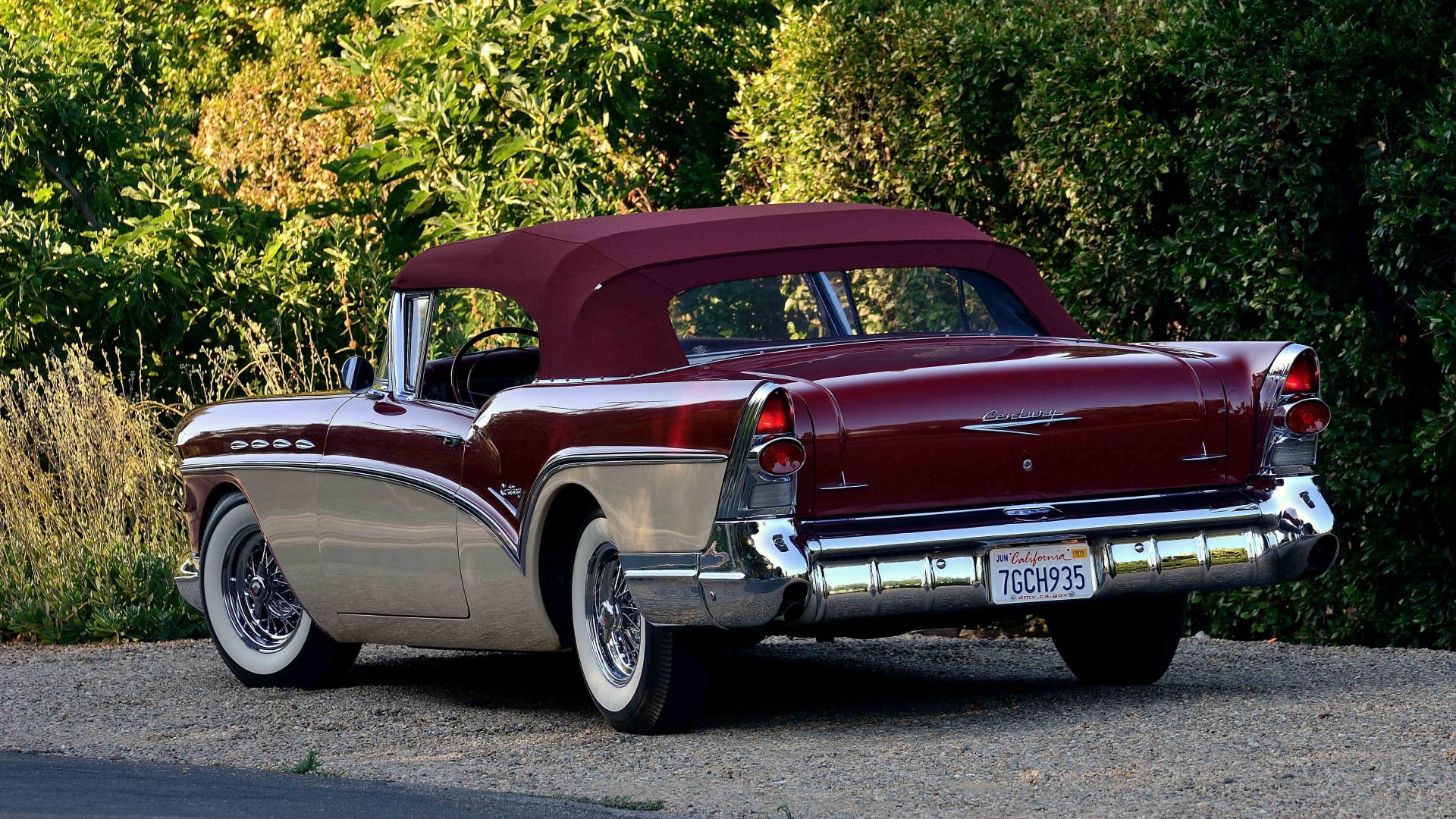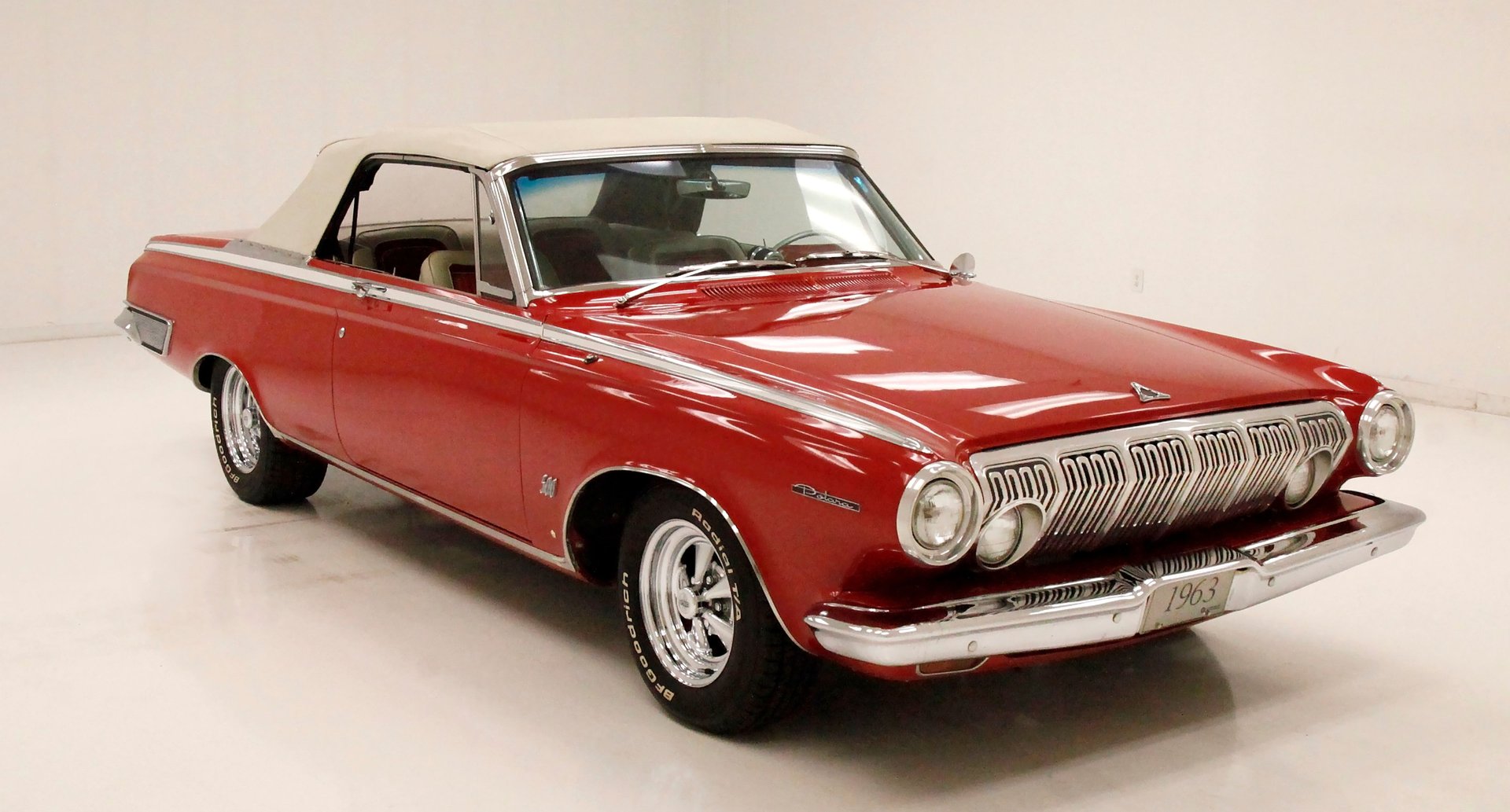This 1964 Oldsmobile Cutlass F85 Deluxe Convertible has the ideal Olds feeling. That means a true V8 cruiser with the right fun extras like four-on-the-floor and a wind-in-your-hair experience. And as you look over the details, you can see a car that was cared for correctly by those who (just like you) want a distinct classic that can also easily be driven.
This is the first year for the second generation of the Cutlass. It was remade larger, more powerful, and roomier. So it’s an ideal cruiser. The clean, simple lines of the car give it a classy look. These really had the elegance subtly added. For example, your eye will first notice the full-length brightwork trim. So it takes an extra moment to recognize the creased sheet metal line above it that tapers inward to create the unique raised trunk.
The exceptional integration of the bright chrome bumpers, distinct four-bar grille, and artfully symmetric tail panel all make this Cutlass quite pleasing to the eye. It’s all finished in the factory-correct Provincial White. The overall impression of the finish is a respected car that’s also meant to be driven. In fact, we are told this has only had three owners in nearly 60 years. While that’s unconfirmed, you do see a level of care that’s right for a car that only a select few have cherished and respectfully driven for decades.
The black convertible roof is a taut-fitting piece that looks timeless against the white exterior. And with the flip of a switch, it powers down to deliver an equally attractive black interior. Not only is the color combo nice, but you’ll love the classic details everywhere from the time capsule of a trunk to the lighting package that greets you when the door opens.
The driver especially gets the right 1960s vibe with the low-back front bucket seats, dual-spoke steering wheel, and a speedometer as wide as the horizon. It’s quite vintage, but you do get the right upgrades to make this a more fun drive. The retro-style AM/FM stereo gives you better driving music. There are upgraded readouts under the dash, including a factory-style tach, and that goes especially well with the upgraded 442-branded shifter.
Under the hood is the 330 cubic-inch V8. We love this motor because it was the debut of a generation of the Rocket V8 that was one of the most successful in Oldsmobile’s history. This example was even rebuilt in the mid-1990 to continue to be a robust powerhouse. Today you’ve got the right classic style with the golden block, valve covers, and intake.
And updates like the MSD coil and Edelbrock four-barrel carburetor keep it a strong runner. There are upgrades to this Cutlass like a four-speed manual transmission, a rear sway bar, and American Racing wheels with wide Cooper Cobra tires. That can often be a muscle car recipe, but this is a true Oldsmobile, and that means a nice all-around cruiser. So you get a nice hint of sporty feeling out on the road, but your total impression is a drop-top classic that you can be out at dawn for cars & coffee and not have to worry about waking the neighborhood with your rumble. It’s the nice guy’s fun classic.





